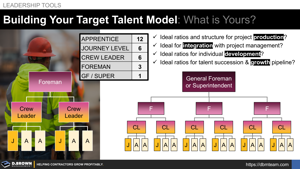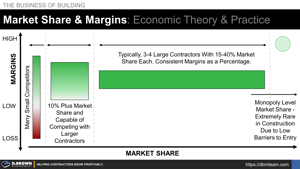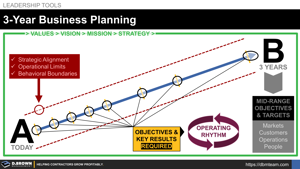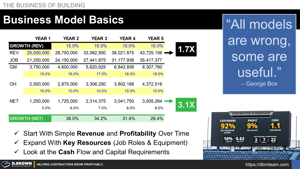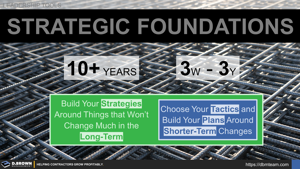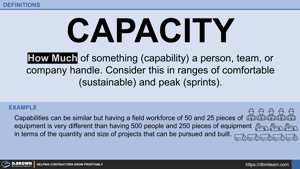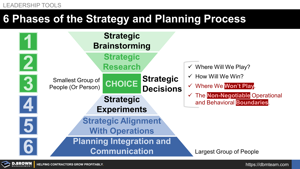Building Your Target Talent Model
Talent is the most constrained resource in the construction industry through at least 2030. With the industry's growth outlook, the contractors with the best Talent Value Streams (TVS) will dramatically outperform. Sadly, there will also be failures.
business planning management talentMarket Share and Margins (Economic Theory and Practice)
When evaluating or deciding on a market strategy, it is helpful for contractors to understand some economic theories and real-world examples of how margins and market share relate to each other.
business development business planning strategyCompetition - What Do You Really Know?
Contractors typically pay too much or too little attention to their competition. The best contractors strike the right balance spending most of their time focused on customers while being deliberate in knowing their competition.
business development business management business planning strategy3-Year Business Planning (Basic Overview)
Your 3-Year Business Plan is the equivalent of a Short-Interval-Plan (SIP) on a construction project. It sets specific objectives and key results for the whole team. It allows you to plan your resources and know if you are on track or not.
business planning strategyBusiness Model Basics for Contractors
A contractor's strategic choices along with the supporting management systems and organizational structure must fit into a viable business model. A business model IS NOT a business plan.
business management business planningStrategic Foundations: What Is Unlikely to Change?
Like construction projects, construction businesses are only as strong as their foundations. Build your strategies around things that are unlikely to change in the long-term (10+ years).
business management business planning leadership strategyTalent Value Stream (TVS): The Basics
The business of building is largely about aligning projects and people. The Talent Value Stream (TVS) ensures talent will never be a constraint to your growth.
business planning Talent Value Stream (TVS)Definition - Capacity
How Much of something (capability) a person, team, or company handle. Consider this in ranges of comfortable (sustainable) and peak (sprints).
business management business planning definitions Organizational Development talent development Talent Value Stream (TVS)Definition - Capability
A team or company’s combination of skills, competencies, knowledge, processes, tools, and behaviors that allows them to Carry Out particular activities or achieve certain goals. Capabilities create the outcomes that customers are paying for.
business management business planning Definitions Organizational Development strategy talent development Talent Value Stream (TVS)6 Phases of the Strategy and Planning Process
The strategy and planning process for a contractor can be broken down into six phases. Each phase is integrated but has a different objective and involves different people. These phases will help you create the right process for your stage of growth.
business management business planning strategy